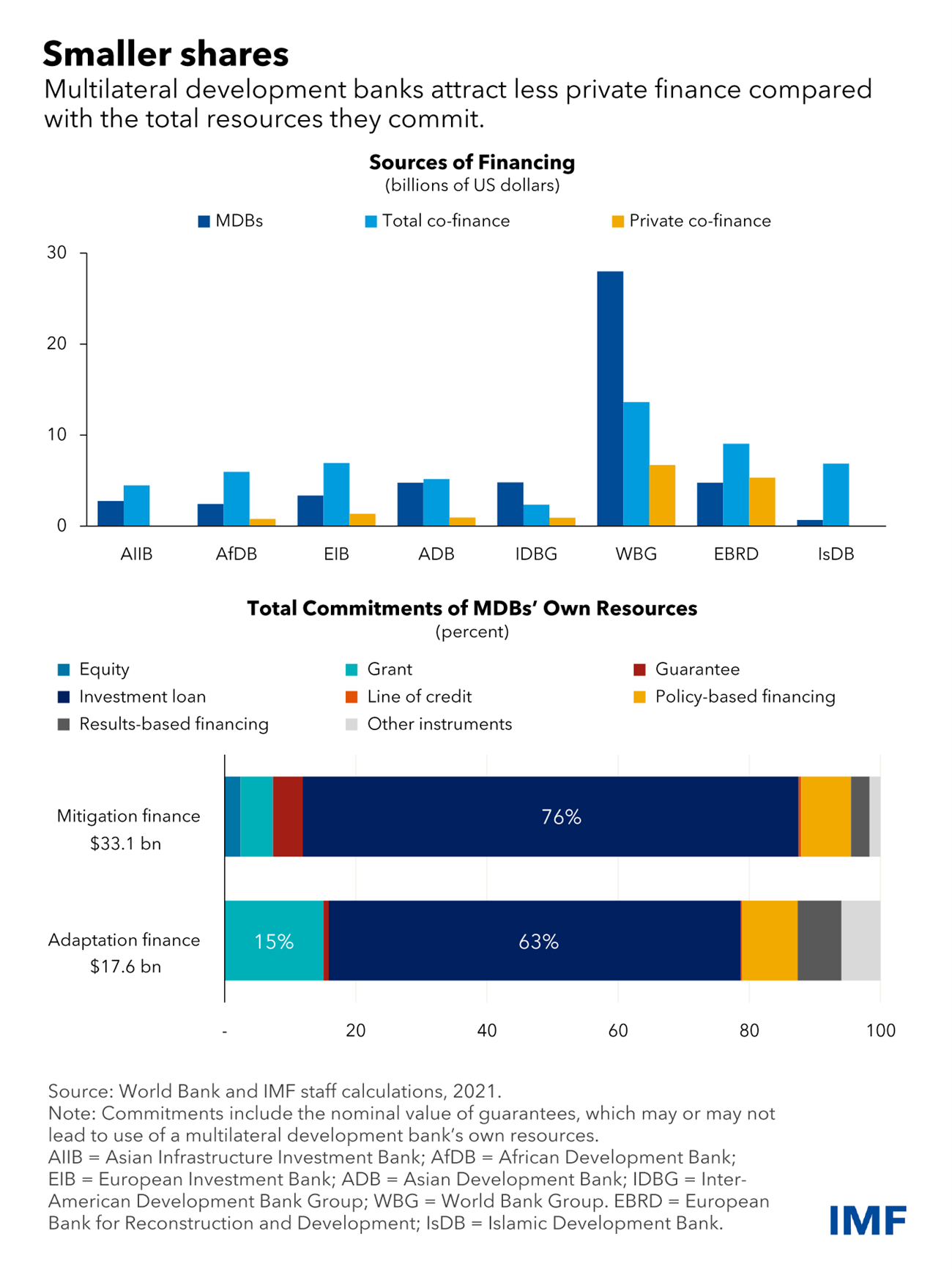Many also have high debt and constrained budgets because of the pandemic
and face higher government borrowing costs amid rising interest rates
around the world, making it especially difficult for public finance to meet
pressing climate financing needs.
These factors mean mobilizing private capital on a large scale will be key
to achieving their climate objectives. Financial markets alone can’t do the
job, but combining public and private capital offers unique advantages by
reducing investment risk and attracting greater funding. Multilateral
development banks and international financial institutions can provide
support through creating blended financing structures to alter the
risk-return profile for the climate transition in emerging economies.
It’s important to start by establishing an attractive investment climate
and policies to incentivize private participation. Climate policies and
finance are complementary because better policies attract private
investment, in turn helping meet policy objectives. Carbon pricing is the
most effective tool to make high emitters pay for the climate costs they
impose and thereby channel private investment toward projects that emit
less.
More generally, climate policies and commitments like the Paris Agreement’s
Nationally Determined Contributions can signal to investors to direct
investment to a low-carbon economy. Establishing a strong
climate information architecture
for data, taxonomies, and disclosures also will help.
Opportunity for impact
Unfortunately, private climate finance faces multiple constraints, from
future policy uncertainty and technological costs that raise the cost of
capital to other barriers such as data limitations and unattractive
risk-return profiles. Despite these challenges, private climate finance can
help emerging economies meet Paris Agreement goals.
Innovative financing instruments can attract investors with different risk
profiles and investment horizons,
as we noted
in our October Global Financial Stability Report. In larger emerging
markets with functioning bond markets, investment vehicles such as green
bond funds can help broaden the investor base by drawing in institutional
participants like insurance companies and pension funds.
Multilateral development banks and international financial institutions
have a crucial role to play to attract much larger sums of private capital.
They can provide technical assistance, helping develop projects, improve
governments’ institutional capacity, and build the local currency bond
markets to broaden the set of domestic investors.
By agreeing to be first to endure losses in green funding vehicles and
securitizations, development banks can increase the expected risk-adjusted
return for private investors. With appropriate governance, public backing
can help avoid moral hazard associated with guarantees, which involve risk
that gains are privatized while losses socialized. Advanced economies could
back public equity as a way of delivering on their annual $100 billion
commitment to emerging and developing economies.
In addition, equity investment can effectively leverage public money.
Commitments by development banks are matched by less than a third of the
amount from private sources, for emerging and developing economies, on average. That contrasts with smaller deals
by the World Bank Group’s International Finance Corporation and Amundi SA,
Europe’s largest asset manager. The IFC-Amundi structured fund attracted 16
times as much private investment.
For less-developed economies, green infrastructure projects will remain a
key instrument, and development banks will naturally play a central and
enduring role. More climate financing could be channeled through
development banks to support such projects by increasing their capital base
and through partnerships with the private sector.
Public money, including from development banks and international financial
institutions, can help launch green or climate structured funds where risk
is distributed among lower tranches of such funds, which could attract much
more private capital to take the senior tranches.
Blended support
In addition, if green or climate funds invest in the equity of climate
projects, development banks and commercial lenders may be more willing to
lend. As such, public money provides incentives at the fund and project
level, and both can be blended with public and private money.
Resilience and Sustainability Trust, now has more than $40 billion in funding pledges, and staff-level
agreements with
Barbados,
Costa Rica, and
Rwanda. Under the RST, lending by the
Resilience and Sustainability Facility
can help boost private financing.
Fund staff will work with governments, development banks and investors to
identify financing constraints and further explore how to scale up private
financing. We’ll also continue to promote carbon pricing, along with
alternatives that can achieve equivalent outcomes, such as feebates and
regulations. And, finally, the IMF will continue to strengthen the climate
information architecture and help emerging economies promote private
climate finance.



